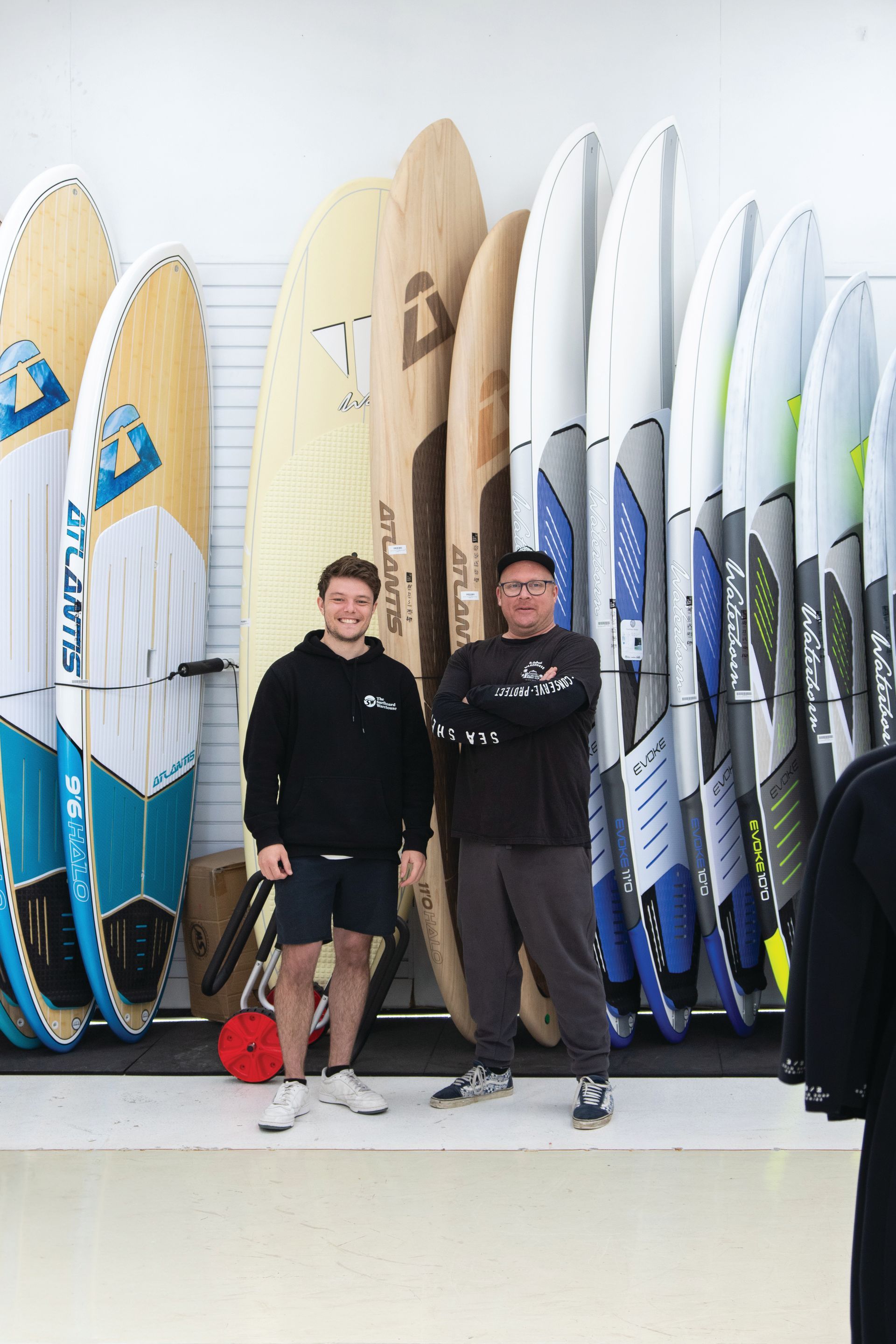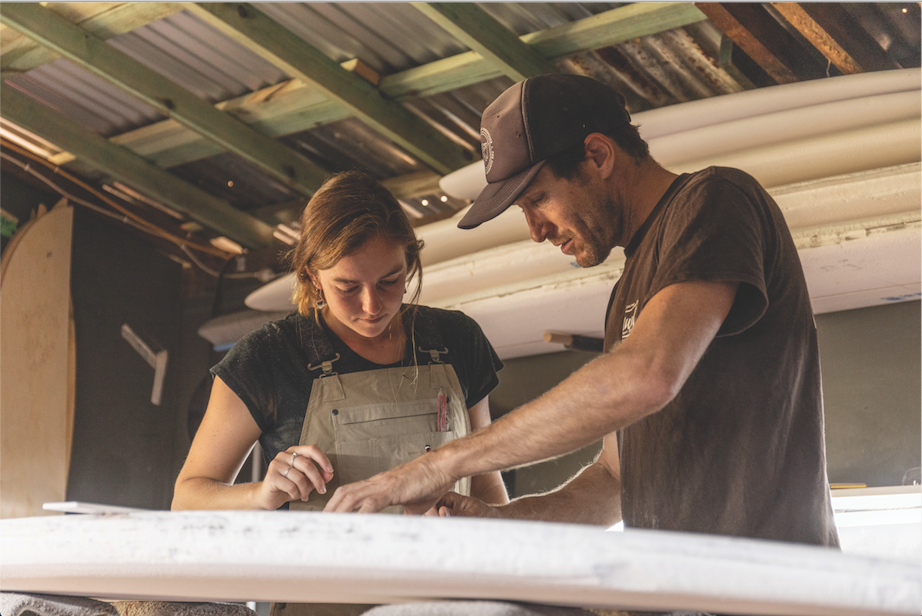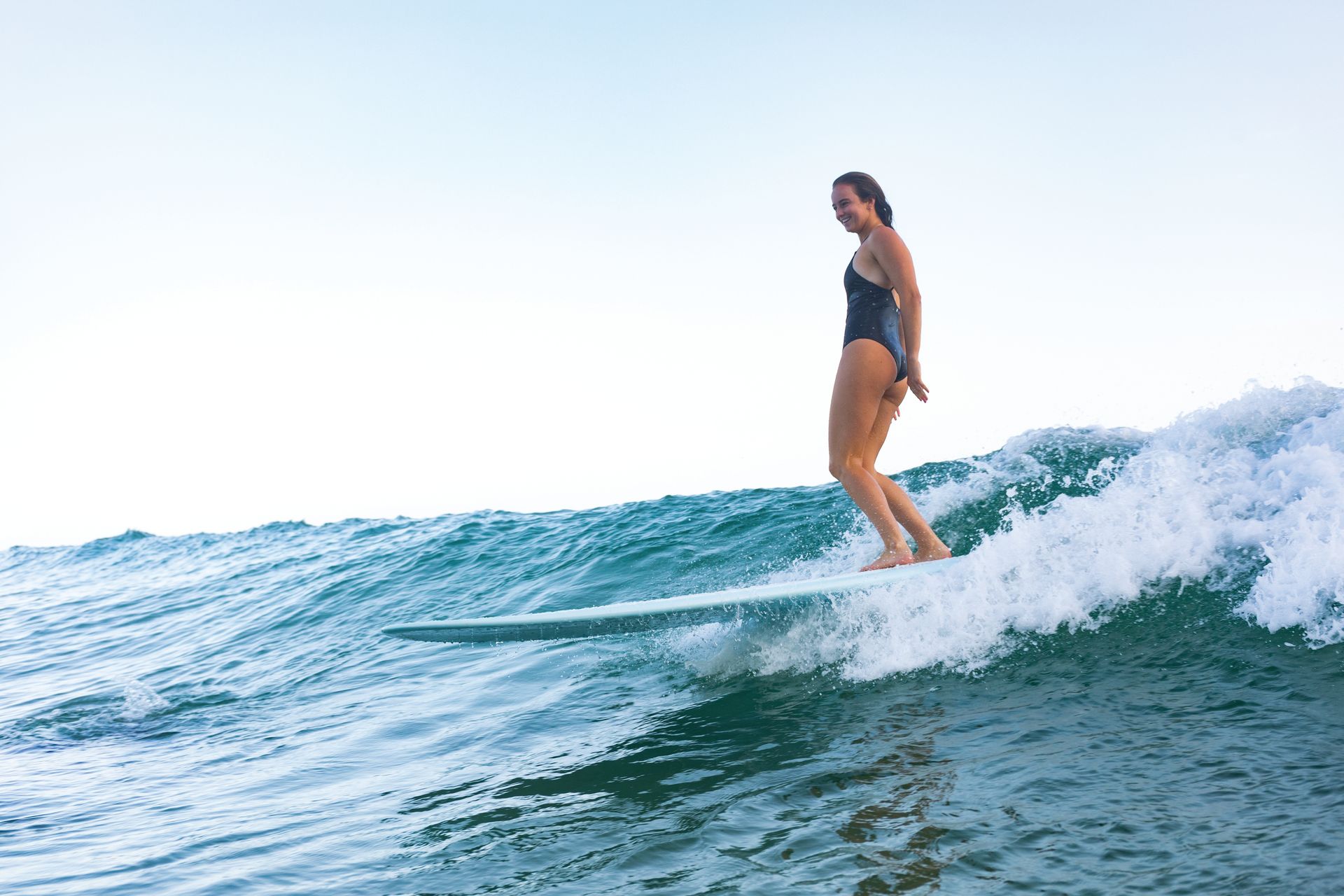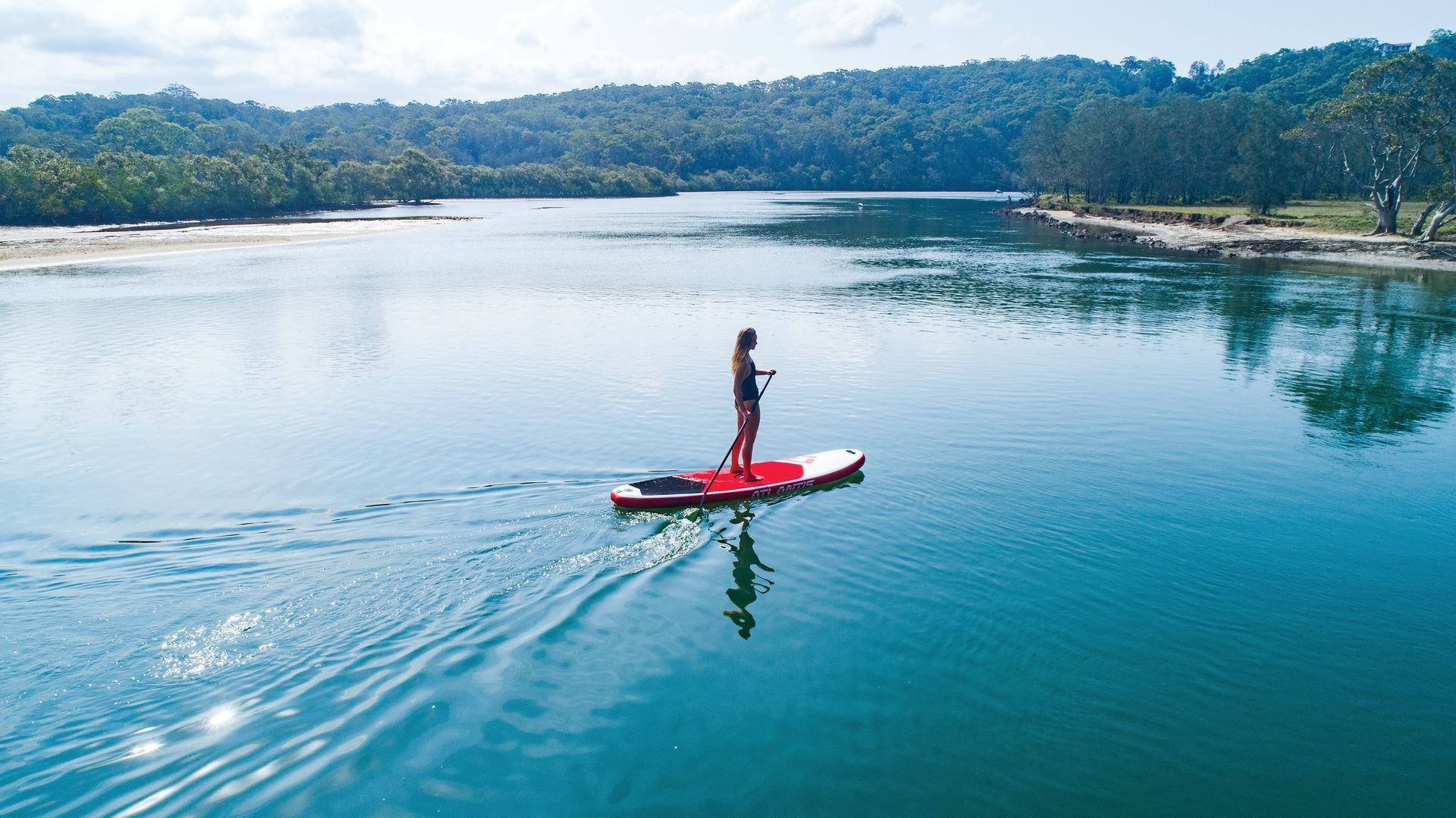
Let's go Surfing
Words: Suzanne McNamara
Photography: Blink Ltd and Supplied
The Surfboard Warehouse is making surfing more accessible with quality, affordable surfboards made for New Zealand conditions.
If you’ve ever given surfing a go, you know it takes a lot of skill to paddle, catch a wave, and stand up for more than two seconds. Perseverance may have been the key to success in the past, but these days The Surfboard Warehouse has revolutionised the beginner experience, making surfing more accessible and easier than ever before.
Firstly, they make boards for all types of conditions. Having a board with volume is the key ingredient to make paddling and catching waves a lot easier. The volume creates buoyancy and lift – this creates less drag when paddling and means you can paddle further and catch waves more easily.
Secondly, anyone serious about making surfing their sport needs a board to practice with regularly. The Surfboard Warehouse has cut out the middleman and the subsequent margin meaning they make and sell quality surfboards at lower price points. Shaping by pros adds credibility and they have a team of pro ambassadors that shape boards for beginners up to pro surfers.
Matthew de Labarde, Manager at The Surfboard Warehouse, says most boards on the market aren’t catering for the beginner or intermediate surfer.
“If you’re after a really nice surfboard you could be looking at between NZ$800 and $1350, whereas we can have some- thing for the same quality for $500 - $600 so it’s a huge difference”.
To illustrate his point, The Surfboard Warehouse’s surfing expert, Jacob de Beurs points to a shiny green longboard in the shop, and he says until now selling a longboard for under $1000 was unheard of.
“That board was shaped by Beau Young, a two-time world champion longboarder – so who better to design our boards than world champs?
Paddleboards
The Surfboard Warehouse’ mission is to get more people into the water and paddleboarding is a gateway to achieving this mission.
If you love the water, but thrashing around in waves isn’t your thing, you might consider a stand-up paddle- board (SUP). These large boards are much easier to stand on and are great for all ages and abilities.
Wherever there is water, there is an opportunity to paddleboard. It’s the perfect sport for getting out into nature, observing marine life and having fun with the entire family.
Paddleboarding is a great way to explore beautiful areas. It can take you adventuring on any body of water. Inflatable ones pack down into backpacks, meaning you can hike into wilderness spots with them and paddle out.
The Surfboard Warehouse makes its own paddleboards, along with carbon paddles, at affordable prices for beginners. They stock a full range of shapes and sizes, using the latest technology with advanced materials for the experienced paddler.
The Surfboard Warehouse paddle- board expert Matthew de Laborde says the inflatables are a good option for convenience, because they pack down and you don’t have to worry about getting a bulky board on top of a car when you are just starting out in the sport.
He explains the different types available: “boards come in three different types, ones for flat water, surf paddleboards and an all-rounder that can be used for both the flat water and surf”.
The Surfboard Warehouse offers affordable beginner inflatable boards that will set you back a mere $299, making them a great Christmas gift, or an opportunity to give it a go with- out breaking the bank.
At that affordable price, all we are waiting for is some warm weather.
Paddleboards explained
The difference between an inflatable and hardboard and how to figure out what is best for you.
Inflatables are great fun and if you are someone who lacks storage space, does not have a suitable vehicle to transport an SUP, or you're on a tight budget, then an inflatable SUP is for you. They can be packed into a backpack, allowing them to be transported and stored with ease. The big plus is they can be a third of the price.
The alternative is hardtops (fibreglass boards). They are inconvenient to store and transport, but they make up for it in performance. When looking for an SUP to surf on, a hardtop is generally recommended as its performance features become more noticeable to the rider when surfing.
There are three main categories of SUPs: flat water, surf and all-rounders. These can be distinguished by their overall shape and rocker. It is important to know whether you are wanting to paddle on flat water, surf, or have the flexibility to do either.
5 tips when learning to surf
1. Know your local.
It is important to know your local surf. What are the waves like? What’s the current like? Is this a good break for beginners? Talk to local surfers, or your local surf shop, or even do research online.
2. Surf etiquette.
There are a lot of unwritten laws in the water and it pays to know them. Being respectful to fellow riders, locals and the environment goes a long way. Avoid dropping in or snaking and keep your distance when you can. Understanding wave priority is important and it is best not to learn it the hard way!
3. Surf alone, die alone.
Always let someone know when and where you're going and when you plan on being back. Surf with friends and always keep an eye on others in the water.
4. Understanding hazards.
It's important to be able to identify a hazard. Rips, currents, waves and the wind are constantly changing, so it always pays to observe for at least 10 minutes before going in.
5. Find the best surf spot for you.
You don't want to throw yourself in the deep end and get stuck inside a heavy set. If you are a beginner, it's always best to ask your local surf shop the location of the best surf spot for beginners.
How to look after your gear to make it last
Sun + Heat = Bad.
Boards and wetsuits will be damaged from this, no matter the brand, no matter the cost. Store items in cool, shaded areas and don’t leave them sitting in your car.
Rinse with fresh water after use.
Something all surfers struggle with, but salt water can decrease the lifespan of boards and wetsuits.
Don't ride your board into the sand.
Obviously, accidents happen, but one of the most common board damages we see is when beginners ride their board until it beaches itself into the sand. Once fins hit an object they can snap the tail and rip or damage the finbox.
The Surfboard Warehouse
86/90 New North Road
Eden Terrace
Web: thesurfboardwarehouse.co.nz
Email:
auckland@tsbw.co.nz



